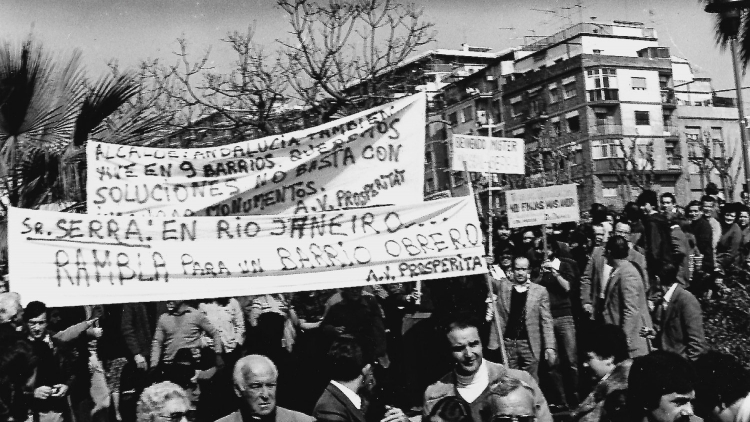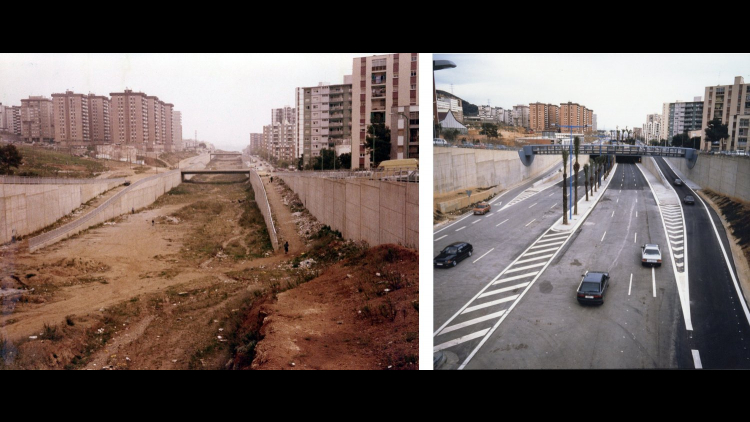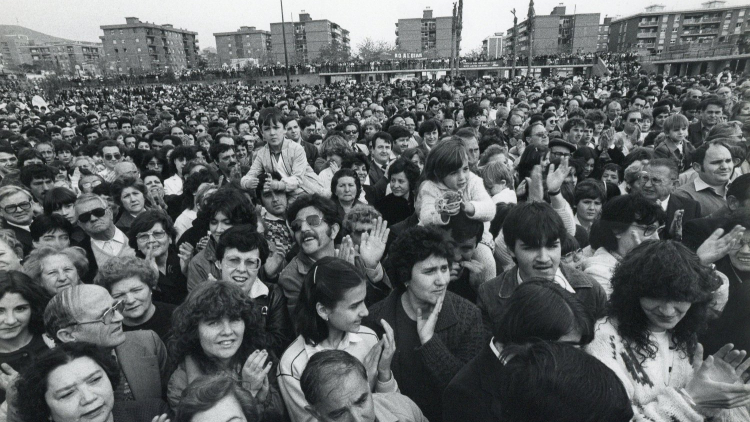Democratising life: human urban planning
Democratising Barcelona not only meant institutions, but also public spaces. The new democratic City Council favoured a style of urban planning adapted to people, enabling the right to the city to be reclaimed.
It inherited some colossal projects from the previous Francoist administration, such as the Second Ring and Via Júlia, as well as other smaller ones like Avinguda de Rio de Janeiro. The residents’ movement led the fight to get the Council to prioritise citizens’ use of public spaces and the urban integrity of city neighbourhoods, and to give private, often speculative, interests less priority. After a tug-of-war between the City Council and residents’ associations, the projects that had been inherited were modified to include tree-lined areas and spaces for pedestrians that reduced the capacity for traffic and gave more importance to local residents as pedestrians.
Green spaces were the other big demand of the time. Residents succeeded in getting the City Council to acquire a huge piece of land covering 22,000 square metres in the heart of the Porta neighbourhood, which had been allocated for building houses. In 1980, the Council started work on turning the site into a landscaped park with trees, as well as facilities for the new district. Plaça de Sóller was inaugurated in 1983, attended by a huge crowd who saw it as a victory for local residents.

Poster for the exhibition on the development of Via Júlia, which the District Municipal Council commissioned from the Nou Barris Studies and Documentation Centre (AMDNB)

Taking advantage of Narcís Serra’s presence at the inauguration of the Blas Infante monument in Parc de la Guineueta (28 February 1982), Nou Barris residents called for Av. de Rio de Janeiro to be developed as a pedestrian avenue (rambla) and not an expressway (Author unknown, Roquetes-Nou Barris Historical Archives)





